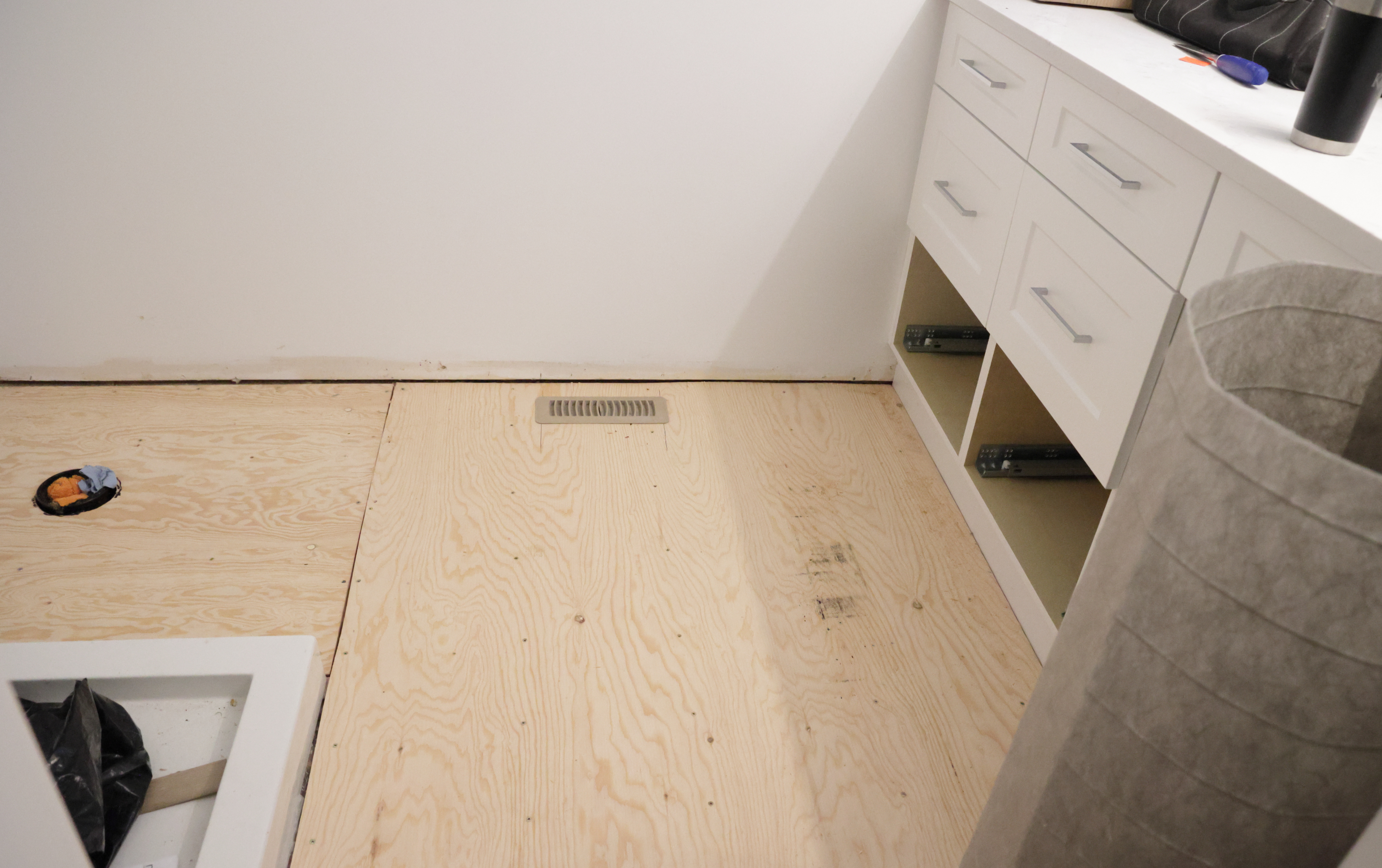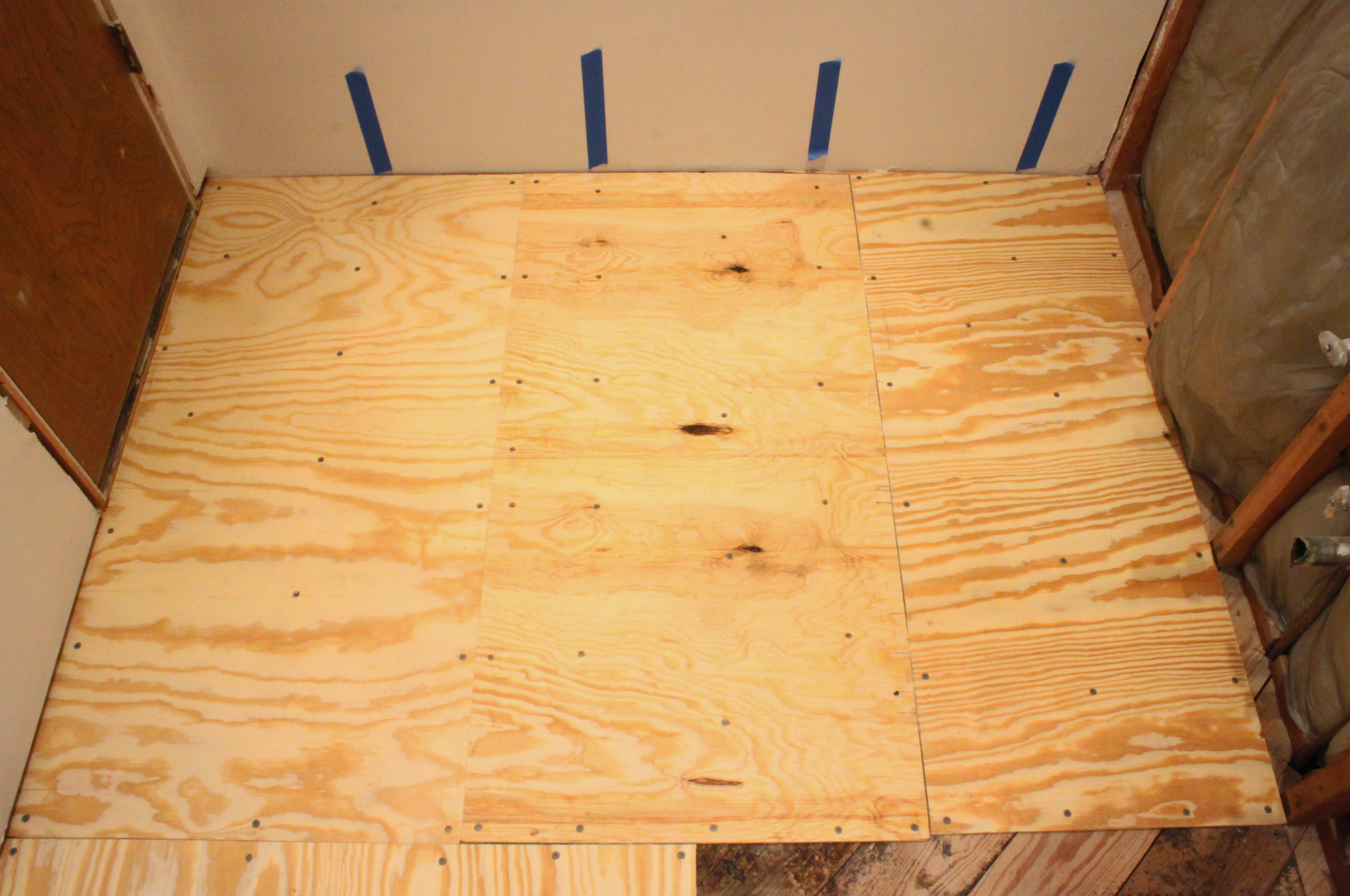Are you wondering what type of plywood is suitable for a bathroom floor? Well, you’re in the right place! Choosing the right plywood for your bathroom floor is crucial to ensure durability and water resistance. So let’s dive in and explore the options that will keep your bathroom floor looking great!
When it comes to bathroom floors, finding the right plywood is essential. You want something that can withstand moisture and humidity without warping or deteriorating over time. Luckily, there are plywood options specifically designed for use in wet areas like bathrooms. So, no need to worry!
In this article, we’ll discuss the different types of plywood that are suitable for bathroom floors. By the end, you’ll have a clear understanding of what plywood is best for your bathroom floor project. Get ready to transform your bathroom with a floor that’s practical, stylish, and built to withstand the test of time!

The Best Plywood for Your Bathroom Floor: A Comprehensive Guide
Are you planning a bathroom renovation and wondering what type of plywood to use for your bathroom floor? Choosing the right plywood is crucial for ensuring the longevity and functionality of your bathroom floor. In this article, we will explore the different types of plywood available, their features and benefits, and provide you with expert tips to help you make an informed decision. Read on to discover the best plywood for your bathroom floor!
Understanding the Different Types of Plywood
When it comes to selecting the plywood for your bathroom floor, you need to consider various factors such as moisture resistance, durability, and cost. Here are three common types of plywood used for bathroom floors:
1. Marine Plywood
Marine plywood is the top choice for bathroom floors due to its exceptional water resistance. This type of plywood is crafted using high-quality, waterproof glue that holds the layers together, making it highly resistant to moisture. Marine plywood is made from hardwood veneers, making it stronger and more durable than standard plywood. It is less prone to warping or delamination, making it an excellent choice for humid bathroom environments.
Marine plywood is available in various grades, and the higher the grade, the better the quality and resistance to water. It may be more expensive than other types of plywood, but it offers excellent value for money due to its durability and long lifespan.
Benefits of Marine Plywood for Bathroom Floors:
- Superior water resistance
- Durable and long-lasting
- Less prone to warping or delamination
2. Exterior Grade Plywood
Exterior grade plywood is another popular choice for bathroom floors. As the name suggests, this type of plywood is designed to withstand outdoor conditions, making it naturally resistant to moisture. It is typically made with moisture-resistant glue, and the outer veneers are treated to enhance water resistance. While not as water-resistant as marine plywood, exterior grade plywood is still a reliable option for bathroom floors.
Similar to marine plywood, exterior grade plywood comes in different grades, and higher grades offer better water resistance and durability. It is more affordable than marine plywood, making it a suitable choice for budget-conscious homeowners.
Benefits of Exterior Grade Plywood for Bathroom Floors:
- Good moisture resistance
- Cost-effective option
- Durable and reliable
3. Moisture Resistant Plywood
Moisture resistant plywood, also known as MR plywood, is manufactured with a special adhesive that provides moderate water resistance. Although it is not as waterproof as marine or exterior grade plywood, it can still withstand occasional exposure to moisture without significant damage. Moisture resistant plywood is commonly used in areas with high humidity, such as bathrooms and kitchens.
While MR plywood is an economical choice, it is essential to ensure proper installation and regular maintenance to prevent moisture seeping through the edges or gaps, which can cause damage over time.
Benefits of Moisture Resistant Plywood for Bathroom Floors:
- Affordable option
- Moderate water resistance
- Suitable for humid environments
Factors to Consider When Choosing Plywood for Your Bathroom Floor
Selecting the right plywood for your bathroom floor involves considering several important factors. Here are some key considerations to keep in mind:
1. Moisture Resistance
The primary concern when choosing plywood for your bathroom floor is its ability to resist moisture. Make sure to select a type of plywood that offers adequate moisture resistance, based on the level of humidity in your bathroom.
Moisture-Resistant Glue:
Check if the plywood is made with moisture-resistant glue. This type of glue prevents water from seeping into the layers and causing delamination.
Veneer Treatment:
Consider if the exterior veneers of the plywood are treated to enhance water resistance. This treatment adds an extra layer of protection against moisture damage.
Key Takeaways: What Plywood to Use for Your Bathroom Floor?
- 1. Choose plywood with a high moisture resistance to withstand the bathroom’s humid environment.
- 2. Opt for marine-grade or exterior-grade plywood for superior water resistance.
- 3. Make sure the plywood is at least 5/8 inch thick to provide proper stability and support.
- 4. Consider using a cement board or waterproof membrane in conjunction with plywood for added protection against moisture.
- 5. Always seal the plywood with a waterproof sealant before installing any floor covering.
Frequently Asked Questions
Welcome to our FAQs section, where we answer common queries about choosing the right plywood for your bathroom floor. Below are five engaging questions and answers to help you make an informed decision.
1. What are the key factors to consider when selecting plywood for a bathroom floor?
When selecting plywood for your bathroom floor, there are a few important factors to consider. First, look for a plywood grade that is suitable for wet or humid conditions, such as ACX or marine-grade plywood. These types of plywood are specifically designed to withstand moisture without warping or delaminating.
Additionally, consider the thickness of the plywood. While standard 3/4-inch plywood is often used for bathroom floors, you may want to opt for a thicker panel, such as 1 inch, for added strength and durability. Finally, make sure the plywood is properly sealed and treated to prevent water damage.
2. Can I use regular plywood for my bathroom floor?
Using regular plywood for your bathroom floor is not recommended. Regular plywood is typically not designed to withstand high moisture levels and may deteriorate or warp when exposed to water. It is best to choose a plywood grade that is specifically intended for wet or humid environments, such as ACX or marine-grade plywood.
These types of plywood have special adhesive properties and construction techniques that make them more resistant to water damage. Investing in the right type of plywood will ensure a long-lasting and durable bathroom floor.
3. How should I prepare the subfloor before installing plywood in the bathroom?
Preparing the subfloor before installing plywood in the bathroom is essential for a successful installation. Start by removing any existing flooring and thoroughly clean the subfloor to remove dirt, debris, and any adhesives. Ensure the subfloor is dry and free from moisture or leaks.
If the subfloor is not level, use a leveling compound to even out any imperfections. Additionally, it is important to apply a waterproofing membrane or primer to the subfloor to create a barrier against moisture. Following these steps will provide a solid and moisture-resistant foundation for your new plywood floor.
4. How do I ensure proper ventilation for my plywood bathroom floor?
Proper ventilation is crucial for maintaining the integrity of your plywood bathroom floor. Ensure that there is sufficient airflow in the bathroom by installing a ventilation fan or opening windows when showering. This will help to reduce humidity levels and prevent moisture buildup that can damage the plywood.
Additionally, regularly inspect and address any plumbing issues or leaks promptly to prevent water from seeping into the plywood. Proper ventilation, along with proactive maintenance, will help extend the lifespan of your plywood bathroom floor.
5. Can I tile directly over plywood in the bathroom?
While it is possible to tile directly over plywood in the bathroom, it is generally not recommended. Plywood can expand and contract with changes in temperature and humidity, which can cause tiles to crack or become loose over time.
To ensure a stable and long-lasting tile installation, it is advisable to use a cement backer board or an uncoupling membrane over the plywood. These materials provide added stability and prevent the transfer of movement from the plywood to the tile. Following proper tile installation techniques will help you achieve a durable and beautiful bathroom floor.

Summary
Hey there! So, we talked about plywood for your bathroom floor. Here’s the lowdown:
First, you want to make sure you use “exterior” or “marine” grade plywood. These types are specially made to handle moisture and won’t get all mushy. They’re more durable, which is super important for bathroom floors.
Next, seal the plywood with a waterproofing product. This adds an extra layer of protection against water damage. And hey, don’t forget to check for any leaks in your bathroom—water and wood don’t mix well.
Remember, using the right plywood and taking some precautions can keep your bathroom floor looking great for a long time. Good luck with your project!
